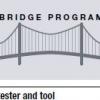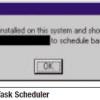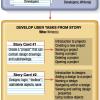 |
Why Testers Should Care About Patterns Patterns, as described by the architect and theorist Christopher Alexander and his colleagues over the last thirty-five years, are a way of describing problems and customizable solutions. Patterns became popular in the software development field, and they've been applied to testing. Here, Brian Marick explores patterns and problem solving.
|
|
 |
Know Thy User Testing, in its broadest sense, means ensuring that your visionaries and programmers are creating a helpful product that people will actually use. As the two authors of this installment of Bug Report illustrate, understanding how those users will operate your application is more than an exercise in empathy; it's a simple key to avoiding some real usability meltdowns.
|
|
|
|
Houston, We Have a Problem Errors start with individuals, and a primary job of testers/QA people is to prevent those errors in the first place. But an equally important part of the job is to find them once they are there, understanding that errors will happen. Jon Hagar asks, "What can we do personally, above and beyond the normal day-to-day jobs that we testers and developers have?"
|
|
|
|
I am a Bug, and Refactoring Our editors recommend the books I am a Bug (a children's book written by a software development manager and tester to explain his job to his children) and Refactoring: Improving the Design of Existing Code (by Martin Fowler, with contributions by Kent Beck, John Brant, William Opdyke, and Don Roberts).
|
|
|
|
Book Review: Adaptive Software Development Johanna Rothman recommends the book Adaptive Software Development by James Highsmith. She says, "Highsmith shows the reader how to recognize when development practices need to change and how to acquire the skills to adapt. For a fresh approach to software development, be sure to check it out."
|
|
|
|
Interesting Times Technical Editor Brian Lawrence offers some troubling trends he sees in the world of software development and testing, including software produced in "Web Time" and mainline business functions being moved onto Web-based systems.
|
|
|
|
The Wonderful World of Software Former STQE magazine Technical Editor Brian Lawrence shares a tale about why a commitment to quality and paying close attention to detail are critical elements in building better software. It’s all about careful planning and anticipating customer behavior. Go with Brian on a stroll through one of the oldest, best-known amusement parks to find out more.
|
|
|
|
How Do You Build the Right Software Right? Technical Editor Brian Lawrence explains his top-three list of things to do to deliver the right software right: risk-based planning, problem definition and modeling, and congruent leadership.
|
|
 |
EXtreme Documentation The kind of collaboration that Extreme Programming engenders can benefit both publications and development. Writing, like programming, is a naturally iterative, revisionary process. Dana De Witt Luther shares what she's learned about documenting an Extreme Programming project, using iterative planning meetings and story cards.
|
|
|
|
What's in a Name? Technical Editor Brian Marick outlines a goal for the magazine and its readers: gradual process improvement, driven by immediate needs.
|
|






